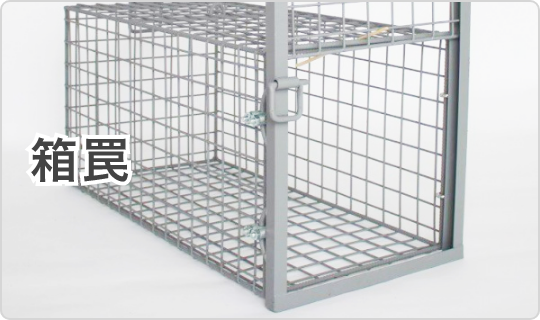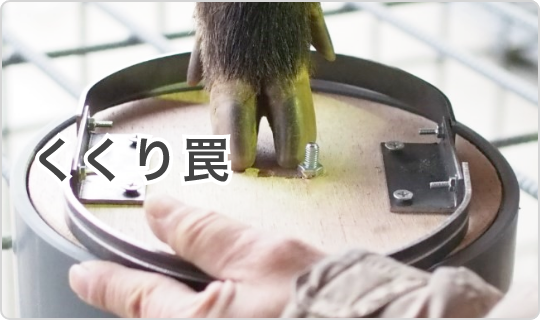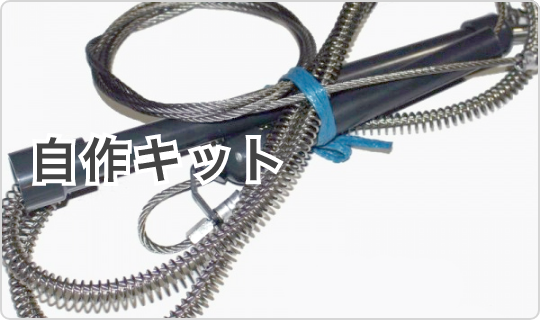A kukuri trap is a trap that captures prey by tying it up. Depending on the part to be tied, it can be divided into "body tie (in some cases, the neck is tied instead of the body)" and "foot tie". Of these, the most commonly used is the 'foot tie'.
Ankle traps are designed so that the moment the set trap is activated, the wire is tightened and the ankle is restrained. They are roughly divided into "kicking string type" that activates when the prey touches the pre-stretched kicking thread, and "footboard type" that activates when the prey steps on a footboard set on the ground. This section describes the components of the "footboard type".
*In the case of tying the body, there are many cases where tying the legs is selected because the size of the trap is restricted, there is a high risk of accidents due to the structure, and the captured prey dies in a short period of time. is.
wire
The thickness of wire that can be used for tying traps is stipulated by law to be 4 mm or more. Even a 1mm difference in thickness can make a big difference in the speed at which the tying trap works. The thinner the wire diameter, the faster it works, and the higher the probability of tying the prey's legs, the higher the capture rate. On the other hand, the smaller the diameter, the easier it is to cut the wire.
Of course, 5mm is much more durable than 4mm, and 6mm is much more durable than 5mm. In particular, if the hind legs are tied on a slope, the weight and momentum of the prey may cut the wire. The power of the wild is more powerful than humans think. For safety, it is recommended that the wires are replaced each time.
The wire that is mainly used for tying traps is called a "wire rope", which is a combination of multiple wire bundles. Flexibility and resistance change depending not only on the rope diameter, but also on the number and arrangement of strands. Selecting a soft wire will increase the speed of operation, but it tends to be easily twisted and cut by a large animal.Sleeve (clamp tube)
Used for locking (caulking) wire ropes. Select and use the size according to the wire diameter. For caulking work, a special tool such as an arm swager is required.Spring
It is the spring that becomes the power for the tying trap to operate. The performance of the spring greatly affects the operation of the trap. There are types such as push springs, pull springs, and pine needle springs (torsion springs). If the force of the spring is strong, the operation will be faster, but it is difficult to install, and you may be injured due to unintended operation, so be careful.compression spring
A type that uses the force of a compressed spring to return to its original state to tighten the wire. A spring is pushed into a PVC pipe, etc. to compress it. Its advantages are that it is inexpensive and has a simple structure, making it easy to manufacture and install. This type is widely used by beginners to advanced users.pull spring
Contrary to the push spring, the wire is tightened by using the force of the pulled spring to return to its original state.Matsuba type (torsion spring)
The center part is twisted into a coil shape, and the terminal part (arm) tries to return to its original shape due to the elastic force generated by this twist, which is used to tighten the wire. The advantage is that the tightening speed is fast and the capture rate is high, and that it is stronger than push springs and pull springs. On the other hand, there have been cases of serious injuries such as blindness due to unintended operation, so it can be said that it is a spring for intermediate to advanced users who are accustomed to handling traps.untwisted
It is also called "Sarukan" or "Swivel". While the captured beast is rampaging, the wire of the tying trap may become twisted (twisted) and break easily, so this part is used to untwist. In addition, the use of tying traps that are not attached to the twist is prohibited by law.Bounding metal fittings & clamping prevention metal fittings
The tying metal fittings (black metal fittings in the photo) are used to prevent prey's legs from coming out of the tied wire. The more the beast pulls on the leg, the harder it will come off. Also, if you have this, you can easily spread the wire loop (snare), so you can easily escape even if you catch it by mistake.
The clamping prevention metal fittings (metal fittings with thumb screws in the photo) are metal fittings that limit the squeezing of the ring so that the wire that binds the prey is not excessively tightened. Excessive tightening can cause the animal's legs to become congested or torn off. As with twisting, the use of unattached tying traps is prohibited by law. 
wire stopper
It is used as a fulcrum on the wire when tightening the spring.
Shackle
It is used when tying a wire to a tree that serves as a support for a tying trap. It is better to choose a sturdy tree that is hard to break. If you can figure it out, you can tie the wire to a support that is flexible and hard to break, which will reduce the strain on the wire from being pulled by the captured animal.tread
When the prey steps on the footboard, the force of the spring tightens the wire and binds the foot. There are various types, but most of them have a structure in which the wire guide rises when the footboard is stepped on, and the wire is tightened by the force of the spring when it is above the horizontal level. Place it on the ground in the path of the beast.*The use of traps with a wire ring diameter exceeding 12 cm is prohibited when set up, but regulations are being relaxed by each prefecture. In advance, it is a good idea to check with each local government what the regulations are for the area where you plan to capture them.
As mentioned above, the capture rate is greatly influenced by the combination of parts and the selection of parts. Commercial products are designed with each manufacturer considering the optimum combination, so you can save the trouble of trial and error in selecting parts. In the case of making your own, the real pleasure is that you can create your own mechanism by incorporating your own experiences and ingenuity.
Note: Since the tying trap directly binds the prey, each part is subjected to a large amount of force. Keep in mind that the components of a tying trap are basically consumables, not just the wire, but also other parts.
Also, if you want to reuse it, be sure to thoroughly check each part for fatigue or damage in advance.

 箱罠
箱罠
 くくり罠
くくり罠
 パーツ類
パーツ類
 電気柵
電気柵
 自作キット
自作キット
 防獣グッズ
防獣グッズ
 監視カメラ
監視カメラ
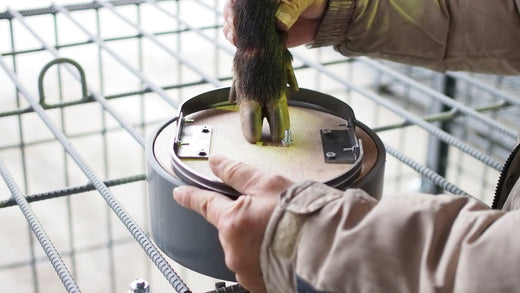
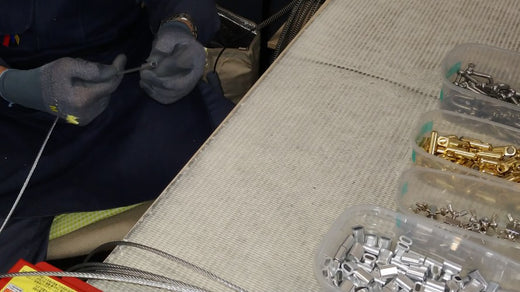
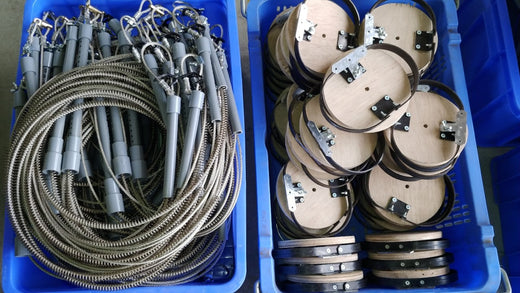
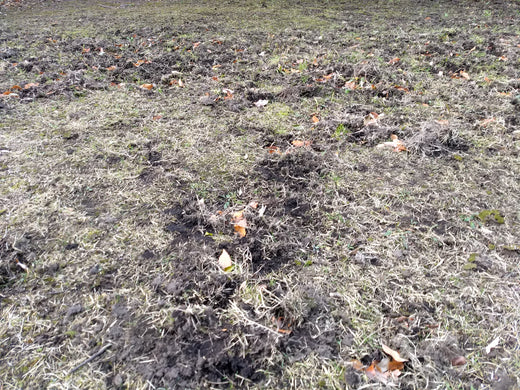
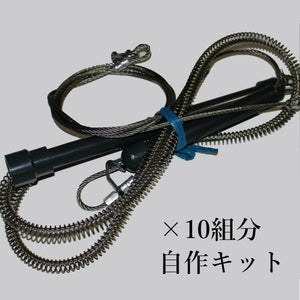
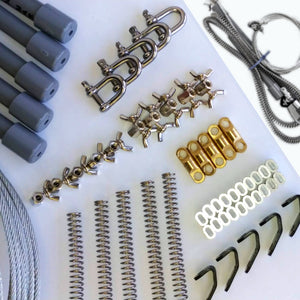
![Swager (Crimping machine, wire cutter) [Hand]](http://inohoi.jp/cdn/shop/products/559168fd9a5204ad15b257e7f05fd3ed_300x300_crop_center.progressive.jpg?v=1663139566)
![Swager (Caulking machine, Wire cutter) [Desktop]](http://inohoi.jp/cdn/shop/products/11f20abc0cac57bb0401c63c01688301_300x300_crop_center.progressive.jpg?v=1663139545)
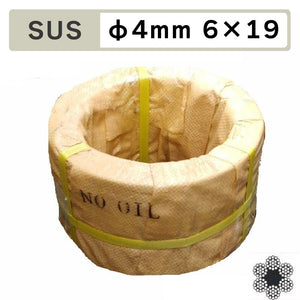
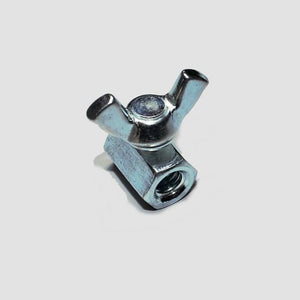
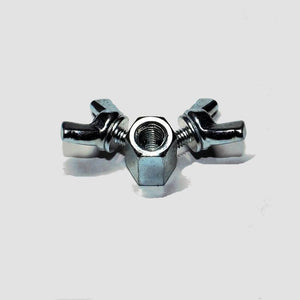
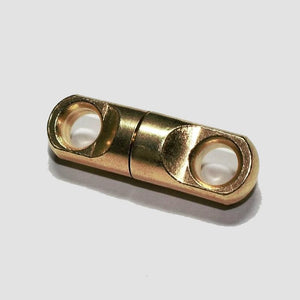
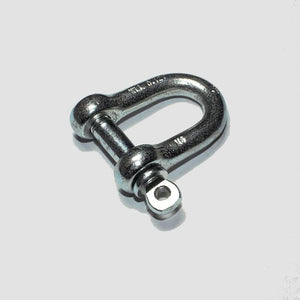
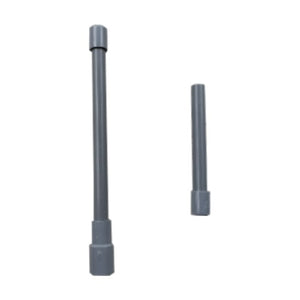
 box trap
box trap
 tying trap
tying trap
 enclosure trap
enclosure trap
 Prevention and avoidance goods
Prevention and avoidance goods
 electric fence
electric fence
 trap surveillance camera
trap surveillance camera
 transportation goods
transportation goods
 Trap detection sensor
Trap detection sensor
 hunting supplies
hunting supplies
 hunting books
hunting books
 Anti-bird goods
Anti-bird goods
 Agricultural materials/machinery
Agricultural materials/machinery
 boar
boar
 deer
deer
 Kyon
Kyon
 monkey
monkey
 raccoon
raccoon
 Badger
Badger
 palm civet
palm civet
 raccoon dog
raccoon dog
 nutria
nutria
 mouse or rat
mouse or rat
 Mole
Mole
 bear
bear
 pigeon
pigeon
 Crow
Crow

